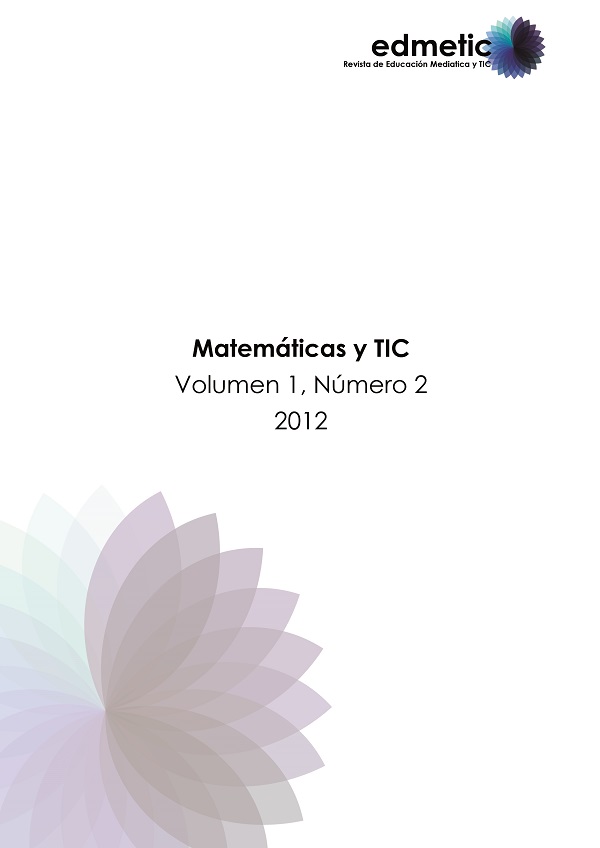Innovación Educativa: Uso de las TIC en la enseñanza de la Matemática Básica
Contenido principal del artículo
Resumen
En el artículo se exponen los resultados obtenidos en una experiencia empírica sobre el uso de diferentes recursos tecnológicos en el proceso de enseñanza - aprendizaje de la asignatura Matemática Básica. Para ello se parte de la presentación de una serie de actividades que tienen como objetivo principal motivar la participación y el aprendizaje activo de los estudiantes, además de desarrollar las competencias matemáticas sugeridas en el proyecto PISA.
Descargas
Detalles del artículo
1. Política propuesta para revistas que ofrecen acceso abierto
Aquellos autores/as que tengan publicaciones con esta revista, aceptan los términos siguientes:- Los autores/as conservarán sus derechos de autor y garantizarán a la revista el derecho de primera publicación de su obra, el cuál estará simultáneamente sujeto a la Licencia de reconocimiento de Creative Commons que permite a terceros compartir la obra siempre que se indique su autor y su primera publicación esta revista.
- Los autores/as podrán adoptar otros acuerdos de licencia no exclusiva de distribución de la versión de la obra publicada (p. ej.: depositarla en un archivo telemático institucional o publicarla en un volumen monográfico) siempre que se indique la publicación inicial en esta revista.
- Se permite y recomienda a los autores/as difundir su obra a través de Internet (p. ej.: en archivos telemáticos institucionales o en su página web) antes y durante el proceso de envío, lo cual puede producir intercambios interesantes y aumentar las citas de la obra publicada. (Véase El efecto del acceso abierto).
2. Política propuesta para revistas que ofrecen acceso abierto diferido
Aquellos autores/as que tengan publicaciones con esta revista, aceptan los términos siguientes:- Los autores/as conservarán sus derechos de autor y garantizarán a la revista el derecho de primera publicación de su obra [ESPECIFICAR PERIODO DE TIEMPO], el cuál estará simultáneamente sujeto a la Licencia de reconocimiento de Creative Commons que permite a terceros compartir la obra siempre que se indique su autor y su primera publicación esta revista.
- Los autores/as podrán adoptar otros acuerdos de licencia no exclusiva de distribución de la versión de la obra publicada (p. ej.: depositarla en un archivo telemático institucional o publicarla en un volumen monográfico) siempre que se indique la publicación inicial en esta revista.
- Se permite y recomienda a los autores/as difundir su obra a través de Internet (p. ej.: en archivos telemáticos institucionales o en su página web) antes y durante el proceso de envío, lo cual puede producir intercambios interesantes y aumentar las citas de la obra publicada. (Véase El efecto del acceso abierto).
Citas
ARTZT, A. F. y NEWMAN, C. M. (1997). How to Use Cooperative Learning in the Mathematics Class (2nd edition). Virginia, USA: National Council of Teachers of Mathematics.
CASTAÑO, C., MAIZ, I., PALACIO, G. y VILLARROEL, J. D. (2008). Prácticas educativas en entornos Web 2.0. Madrid: Sintesis.
EDUCASTUR. CONSEJERÍA DE EDUCACIÓN DEL PRINCIPADO DE ASTURIAS (2007). “Web 2.0 y educación”. Recuperado de http://blog.educastur.es/files/2007/06/web2_0v02.pdf.
ERBAS, A. K., LEDFORD, S., POLLY, D. y ORRILL, C.. (2004). Engaging Students through Technology. Mathematics Teaching in the Middle School, 9(6), 300-305.
HODGES, T. y CONNER, E. (2011). Reflections on a Technology-Rich Mathematics Classroom. Mathematics Teacher, 104(6), 432-438.
MARTIN, G. W. (2009). The NCTM High School Curriculum Project: Why It Matters to You. Mathematics Teacher, 103(3), 164–166.
MORENO, F. y SANTIAGO, R. (2003). Formación online. Guía para profesores universitarios. La Rioja: Universidad de la Rioja: REUD, NUTEINCO
NATIONAL COUNCIL OF TEACHERS OF MATHEMATICS (2000). Principles and Standars for school mathematics. Reston, VA: NCTM.
NATIONAL COUNCIL OF TEACHERS OF MATHEMATICS (2008). The Role of Technology in the Teaching and Learning of Mathematics. Position paper. Reston, VA: NCTM. Recuperado de www.nctm.org/about/content.aspx?id=14233.
NISS, M. y JENSEN, T. H. (eds.) (2002). Competencies and the learning of mathematics. Ideas and inspiration for development of mathematics education in Denmark. Copenhagen: The Ministry of Education.
NISS, M. y JENSEN, T. H. (eds.) (2011). Competencies in mathematics education-potentials and challenges. What’s the point? What new? What do we gain? What are the pitfalls? Recuperado de: http://cimm.ucr.ac.cr/ocs/index.php/xiii_ciaem/xiii_ciaem/paper/viewFile/2883/1087.
OECD (2003). The PISA 2003 assessment framework. Mathematics, reading, science and problem solving knowledge and skills. Paris: OECD.
OECD (2004). Learning for tomorrow's world: First results from PISA 2003. Paris: OECD.
PARDO, H. (2007). Nociones básicas alrededor de la WEB. 2.0. (pp. 27-42). En C. Cobo y H. Pardo (eds.). Planeta Web.2.0. Inteligencia colectiva o medios fast food, grup de Recerca dínteraccions digitals. Barcelona-México: Univers Vic/Flasco.
